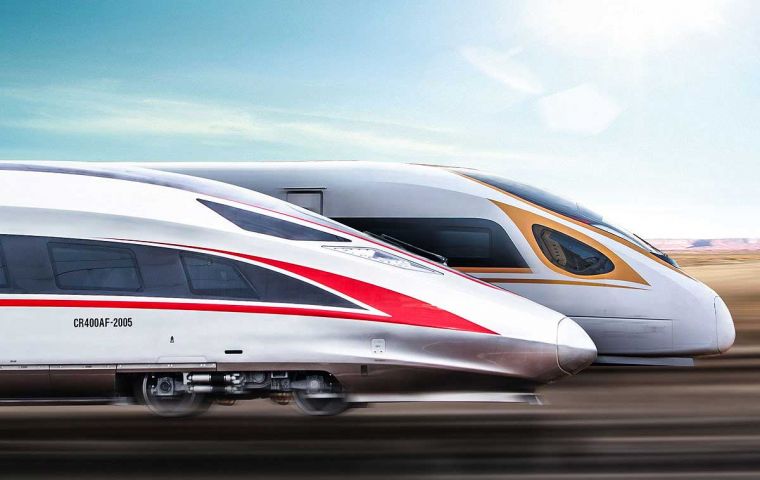MercoPress. South Atlantic News Agency
High-speed train between Rio and Sao Paulo could revolutionize travel in Brazil
 By land, Sao Paulo and Rio de Janeiro are currently linked by bus services, taking around 6 hours each way
By land, Sao Paulo and Rio de Janeiro are currently linked by bus services, taking around 6 hours each way Brazil's plans for a groundbreaking high-speed rail (HSR) system that promises to connect Rio de Janeiro and São Paulo in an estimated 1 hour and 45 minutes could potentially revolutionize transport in South America.
The project, overseen by the private company TAV Brasil, is designed to operate at speeds up to 320 km/h, with the capacity to reach 350 km/h on certain sections. If completed, it would be the first such service on the continent. TAV Brasil currently projects the start of operations for 2032, pending licensing and financial closure.
Since February 2023, TAV Brasil has held a 99-year authorization from the National Land Transport Agency (ANTT) to develop and operate the system. This model bypasses the need for a public tender but requires the company to prove technical, economic, and environmental feasibility.
The proposed route spans approximately 417 kilometers, featuring terminal stations in the central regions of both Rio and São Paulo, with intermediate stops planned for Volta Redonda (RJ) and São José dos Campos (SP).
The project calls for dedicated high-speed trains utilizing 25 kV AC electrification and the ERTMS/ETCS signaling system, a global standard used in countries like France, Spain, and Japan.
TAV Brasil estimates a total investment of R$60 billion (approximately US$12 billion) is required, covering civil works, control systems, stations, and train procurement.
The financial structure is expected to combine private capital and long-term financing, with ongoing negotiations reported with international investment funds and manufacturers, including groups from Spain, China, and Arab funds. The government's role will be limited to institutional coordination and licensing, with no direct public investment currently planned.
The project is still in the planning phase, and construction has not yet begun. The mandatory technical, economic, and environmental feasibility studies (EVTEA) are scheduled for completion by late 2026. This will precede the environmental licensing and construction phases.
Experts suggest that reducing the travel time in this highly congested corridor could drastically shift the transport profile away from air and road travel. The TAV is expected to reduce airport congestion, increase travel predictability, and potentially lower emissions per passenger.
The progression of the project remains contingent on securing final environmental licenses, resolving land expropriation agreements, and finalizing the significant financial structure.




Top Comments
Disclaimer & comment rules-

-

Read all commentsCool. I remember the original days when they flew Lockheed Electras on the ponte aero. Whose land will be expropriated and at what price?
Nov 04th, 2025 - 11:19 pm +1I believe that the high-speed train connecting all the northeastern capitals, except Teresina, will be completed faster than the train from São Paulo to Rio de Janeiro. Chinese companies have already started the section linking Salvador to Aracaju. Structural works and land expropriation along the tracks have begun.
Nov 05th, 2025 - 08:28 am -1However, the first structural project to be completed is the bridge linking Salvador to Itaparica Island, which reduces the distance between northern and southern Bahia by 300 km, benefiting not only the people but also the Enseada naval shipyard complex, which was recently contracted by Transpetro to build eight supertankers powered by biofuel.
https://www.gov.br/casacivil/pt-br/assuntos/noticias/2025/setembro/governo-federal-inclui-ponte-salvador2013ilha-de-itaparica-em-lista-de-projetos-prioritarios-para-investimentos
Commenting for this story is now closed.
If you have a Facebook account, become a fan and comment on our Facebook Page!